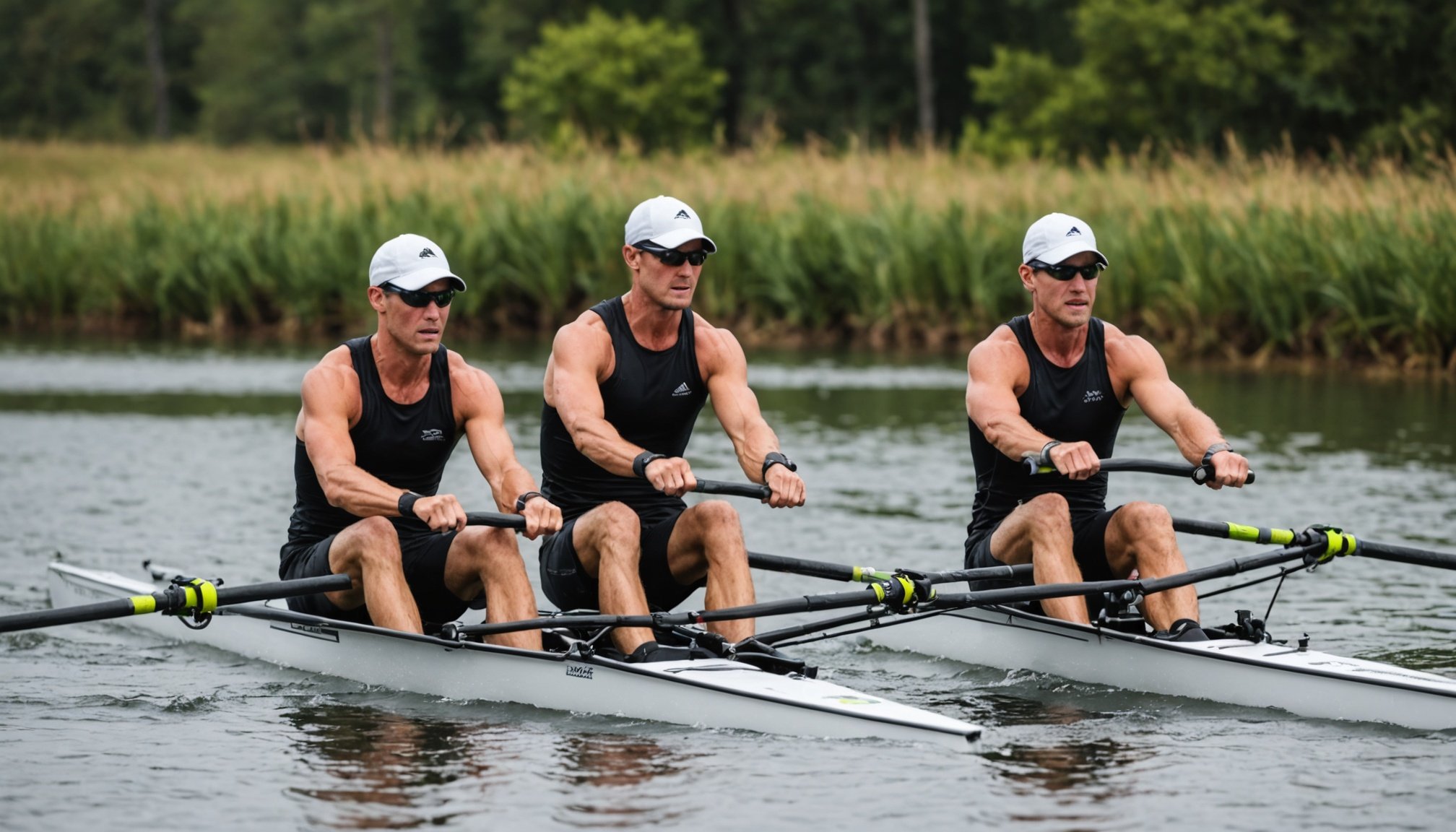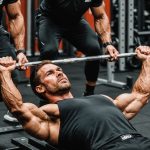Unlocking Endurance: Proven Techniques for Rowers to Conquer Long-Distance Races
When it comes to endurance sports, rowing stands out as a comprehensive and demanding activity that requires a blend of strength, cardiovascular fitness, and technique. For rowers aiming to conquer long-distance races, a well-structured training plan, combined with the right techniques and cross-training strategies, is crucial. Here’s a detailed guide to help you unlock your endurance potential and perform at your best on race day.
Understanding the Basics of Rowing Endurance
Rowing is an exercise that engages multiple muscle groups simultaneously, making it an excellent full-body workout. It involves the legs, back, arms, and core, which are all essential for generating power and maintaining endurance[2].
In the same genre : Enhancing squash performance: unleashing the power of peripheral vision for athletes
Key Muscle Groups Involved
- Legs: Quadriceps, hamstrings, and calves are crucial for the drive phase of the rowing stroke.
- Back: Muscles like the latissimus dorsi, rhomboids, and trapezius help in the pull phase.
- Arms: Biceps and triceps are involved in the finish phase.
- Core: Abdominals and lower back muscles stabilize the body throughout the stroke.
Building a Comprehensive Training Plan
A successful training plan for rowing endurance involves a mix of specific rowing workouts, cross-training, and recovery strategies.
Rowing Workouts
Rowing workouts can be divided into several types, each targeting different aspects of fitness:
In the same genre : Hike seeker: your guide to top trails and gear tips
- Steady State: Long, continuous rows at a moderate intensity to build cardiovascular endurance.
- Example: Rowing at a steady state for 30-60 minutes at 60-70% of your maximum heart rate.
- Interval Training: Alternating between high-intensity and low-intensity periods to improve anaerobic endurance.
- Example: 4×1000 meters at high intensity with 500 meters of easy rowing in between.
- High Intensity: Short bursts of maximum effort to increase power and speed.
- Example: 10×200 meters at maximum intensity with 200 meters of easy rowing in between.
Cross Training
Cross-training is essential for endurance athletes to avoid overuse injuries and improve overall fitness. Here are some effective cross-training activities for rowers:
- Cycling: Low-impact and easy on the joints, cycling can help build cardiovascular endurance without the high impact of running.
- Example: A long bike ride on the weekends can complement your rowing training during the week[1].
- Running: While high-impact, running can be beneficial for building endurance, especially when done in moderation.
- Example: Incorporate short runs (20-30 minutes) twice a week to improve cardiovascular fitness.
- Swimming: Another low-impact activity that works multiple muscle groups and can help with recovery.
- Example: Swimming laps or doing interval training in the pool can be an excellent way to cross-train[1].
Using Rowing Machines for Effective Training
Rowing machines are a versatile tool for rowers, offering a controlled environment to train and monitor progress.
Benefits of Rowing Machines
- Low Impact: Rowing machines are gentle on the joints, reducing the risk of injury compared to high-impact activities like running[2].
- Full-Body Workout: Engages multiple muscle groups, providing a comprehensive workout.
- Cardiovascular Benefits: Improves heart rate and circulation, enhancing overall cardiovascular fitness.
- Adjustable Resistance: Allows for varying levels of intensity, making it suitable for both beginners and advanced athletes.
Choosing the Right Rowing Machine
When selecting a rowing machine, consider the following factors:
| Feature | Description | Importance |
|---|---|---|
| Resistance Type | Magnetic, air, or water resistance | Determines the feel and intensity of the workout |
| Adjustability | Ability to adjust resistance levels | Crucial for tailoring workouts to individual fitness levels |
| Ergonomics | Comfort and stability of the machine | Affects long-term use and reduces risk of injury |
| Monitoring | Ability to track metrics like calories, time, and strokes | Helps in monitoring progress and setting goals |
For example, the Fitness Doctor – Shark 2 is a good option for beginners, offering a fluid resistance mechanism and basic monitoring features, although it may lack the intensity and ergonomics needed for advanced training[3].
Incorporating Strength Training
Strength training is vital for rowers to enhance power and endurance. Here are some key exercises to include in your strength training routine:
Core and Back Exercises
- Planks: Strengthens the core and improves posture.
- Deadlifts: Works the back, legs, and core.
- Rowing Exercises: Lat pull-downs, rows, and pull-ups target the back muscles.
Leg and Glute Exercises
- Squats: Strengthens the legs and glutes.
- Lunges: Targets the legs and improves balance.
- Leg Press: Works the quadriceps, hamstrings, and glutes.
Arm and Shoulder Exercises
- Bicep Curls: Strengthens the biceps.
- Tricep Dips: Targets the triceps.
- Shoulder Press: Works the shoulders and improves overall upper body strength.
Managing Intensity and Recovery
Proper management of intensity and recovery is critical for endurance athletes.
Training Zones
Understanding your training zones can help you optimize your workouts:
- Zone 1: Low Intensity – 50-60% of maximum heart rate, used for recovery and warm-ups.
- Zone 2: Steady State – 60-70% of maximum heart rate, used for building cardiovascular endurance.
- Zone 3: Tempo – 70-80% of maximum heart rate, used for improving lactate threshold.
- Zone 4: High Intensity – 80-90% of maximum heart rate, used for interval training and sprints.
- Zone 5: Maximum Effort – 90-100% of maximum heart rate, used for short bursts of maximum intensity.
Recovery Strategies
- Rest Days: Include at least one or two rest days per week to allow your body to recover.
- Active Recovery: Engage in low-intensity activities like yoga or light swimming to aid in recovery.
- Nutrition and Hydration: Ensure you are fueling your body with the right nutrients and staying hydrated to support recovery.
User Stories and Case Studies
Real-life examples from athletes can provide valuable insights into effective training methods.
Example: Cross-Training for Endurance
A rower who incorporated cycling into their training plan found that it significantly reduced the risk of overuse injuries while improving cardiovascular endurance. Here’s a quote from the athlete:
“Adding cycling to my training routine has been a game-changer. It allows me to build endurance without the high impact of running, and I’ve noticed a significant improvement in my rowing performance.”
Case Study: High-Intensity Interval Training
A study on high-intensity interval training (HIIT) showed that athletes who incorporated HIIT into their rowing training saw a significant increase in their lactate threshold and overall performance.
“HIIT has been instrumental in improving my endurance. The short bursts of high-intensity rowing followed by recovery periods have helped me build the stamina I need for long-distance races,” said one of the athletes in the study.
Practical Insights and Actionable Advice
Here are some practical tips to help you implement these techniques into your training:
Create a Balanced Training Plan
- Ensure your training plan includes a mix of rowing workouts, cross-training, strength training, and recovery days.
- Use tools like Insyd to monitor your training zones and adjust your intensity accordingly.
Listen to Your Body
- Pay attention to your body and take rest days when needed.
- Incorporate active recovery techniques to aid in muscle repair and overall recovery.
Stay Hydrated and Fueled
- Make sure you are consuming the right nutrients to support your training.
- Stay hydrated throughout your workouts and recovery periods.
Conquering long-distance rowing races requires a holistic approach to training that includes specific rowing workouts, cross-training, strength training, and careful management of intensity and recovery. By understanding the key muscle groups involved, using rowing machines effectively, and incorporating practical insights into your training plan, you can unlock your endurance potential and perform at your best on race day.
Remember, endurance training is a journey, and consistency, patience, and the right strategies are key to achieving high performance. Whether you’re a seasoned athlete or just starting out, these proven techniques will help you build the endurance you need to conquer any long-distance rowing race.











